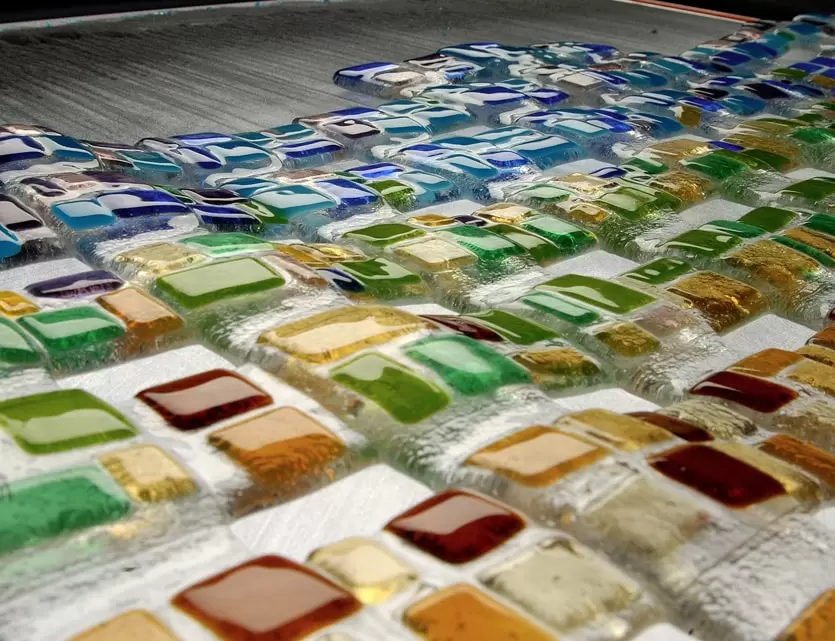Glass fusing is an ancient art form with roots dating back to the Egyptians around 2000 BCE. The process involves melting and bonding pieces of glass in a kiln at high temperatures, typically between 1,099 and 1,501 degrees Celsius (2,010 to 2,734 degrees Fahrenheit). Artists employ various techniques, such as stacking, layering, and kiln carving, to create intricate designs and patterns in the fused glass.
Types of glass:
Glass fusing encompasses a diverse range of glass types, each with its unique properties. Compatible glass, specifically designed for fusing, ensures that pieces adhere and bond properly during the firing process. Bullseye, Spectrum, and Uroboros are popular brands known for their compatibility and vibrant color options. Additionally, artists may use accessory glasses like frit (crushed glass) and stringers (thin glass rods) to add texture and detail to their creations.
Basic process:
The glass fusing process involves several key steps. First, artists select and cut pieces of compatible glass to create their desired design. These pieces are then arranged on a kiln shelf and fired in a kiln. The initial firing, known as the “fuse,” binds the glass pieces together. For more intricate designs, additional firings may be necessary to achieve specific shapes or textures. Artists often use molds, slumping techniques, or temperature control to manipulate the glass during subsequent firings.
Compatibility and COE:
Coefficient of Expansion (COE) is a crucial factor in glass fusing. COE represents how much a material expands or contracts with changes in temperature. It is vital to use glass with similar COEs to prevent stress and breakage during the fusing process. Many artists adhere to a specific COE, such as 90 or 96, ensuring that the glass pieces in their creations have compatible thermal characteristics.
Kiln considerations:
The kiln is the heart of the glass fusing process. Artists must carefully control the temperature and duration of firings to achieve desired results. Kilns come in various sizes and types, including top-loading and front-loading designs. Programmable digital controllers enable precise temperature regulation, allowing artists to experiment with different firing schedules to achieve specific effects.
Versatility in artistic expression:
Glass fusing offers a vast scope for artistic expression. Artists can create a myriad of items, including jewelry, bowls, sculptures, and wall art. The versatility of the medium allows for experimentation with colors, shapes, and textures, making each piece a unique work of art. Additionally, artists often incorporate other techniques such as slumping, tack fusing, and combing to enhance the visual complexity of their creations.
